Table of Contents
Related FAQs
FAQ Categories
What is orange peel and DOI and how is it measured?
What is DOI?
Distinctness of Image is, as the name implies a function of the sharpness of a reflected image in a coating surface.
Two surfaces finished with similar coatings may exhibit identical gloss values but visually the quality of one coating can be seen to be very poor. Upon closer inspection the visually substandard poor coating has a highly textured dimpled appearance known as “orange peel”. When a reflected object is viewed in such a coating the image becomes fuzzy and distorted.
What is orange peel?
Orange peel, waviness, texturing, pin holing and similar effects can be problematic in many high gloss coating applications including automotive, powder coating and any other industries that requires a smooth homogenous finish. All these effects can be measured with the Rhopoint IQ.
DOI has been measured instrumentally and subjectively in the automotive industry for many years. Instruments that measured this value in the past were bulky expensive and some had poor repeatability. DOI measurement was not common outside of automotive because of the cost of equipment was high and the demand for high quality gloss finish was not as crucial.
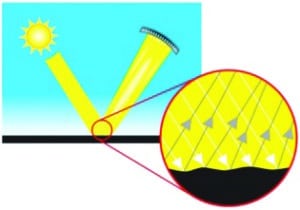
Measuring Orange Peel and Distinctness of Image (DOI) with the Rhopoint IQ
The Rhopoint IQ measures the DOI of a surface by quantifying the way a reflected measurement beam is spread and distorted around the specular angle.
Example test panels with low and high DOI values. Orange peel, texture, flow out and other key parameters can be assessed in coating applications where high gloss quality is becoming increasingly important.
The DOI value of a surface is a number between zero and one hundred; a surface that exhibits a perfect undistorted image returns a value of 100, as texture increases the image becomes distorted and the DOI value decreases.
Disadvantages of Distinctness of Image
Distinctness of Image (DOI) was one of the first parameters to define surface texture, it was originally a visual and instrumental measurement.
Distinctness of image is, as the name implies a function of the sharpness of a reflected image in a coating surface. As more orange peel becomes visible on a surface the distinctness of the reflected image becomes lower.
This effect is measured instrumentally by quantifying the way that light is reflected around the specular angle, a perfectly smooth surface with sharp reflection has a DOI of 100, decreasing with the amount of orange peel present.
Whilst the DOI parameter was suitable for the fineness of finish available around the time of its development, the quality of today’s coatings has increased to a point where DOI is a much less relevant measurement in many industries.
What is Reflected Image Quality (RIQ)?
Reflected Image Quality is a new measurement developed by Rhopoint Instruments to provide greater sensitivity when evaluating highly reflective coatings and the specular / diffuse element of lower gloss materials.
Two highly reflective surfaces that have very small changes in orange peel or texture will show very little or no change in DOI due to the way that it is calculated, but will appear quite different visually.
By reducing the sensing distance around the specular angle and measuring the reflected light and distortion around it, a much higher resolution response is achieved with greater linearity, more in line with the visual experience.
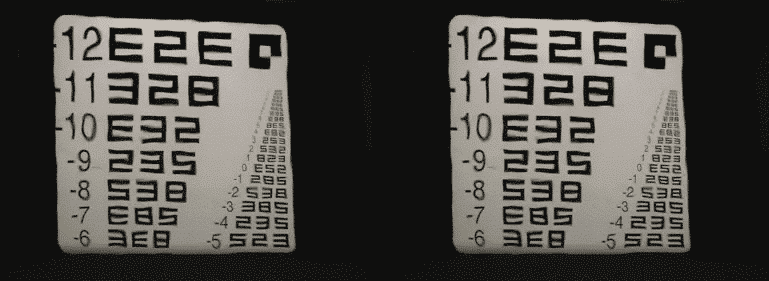
Two highly reflective panels with the same gloss values show little change in DOI but appear different. However, when using RIQ a greater differentiation is achieved.
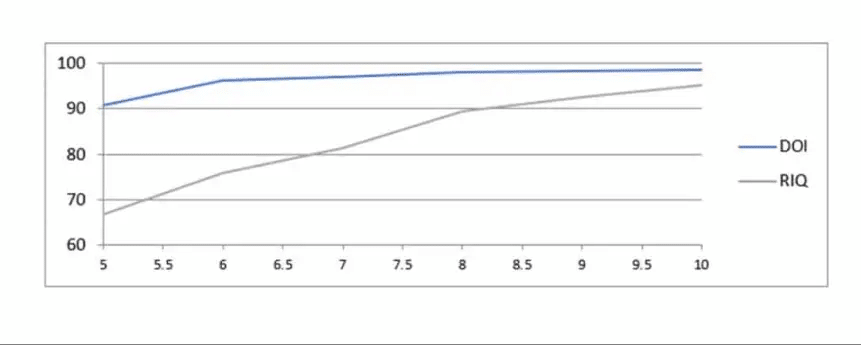
The RIQ value of a surface is also a number between zero and one hundred; a surface that exhibits a perfect undistorted image returns a value of 100, as the values decrease higher surface texture is present and the image sharpness reduced.
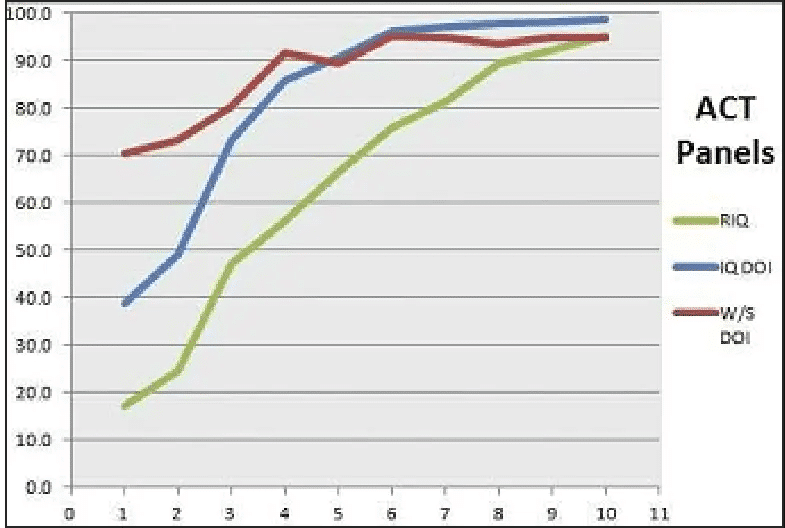
Related products
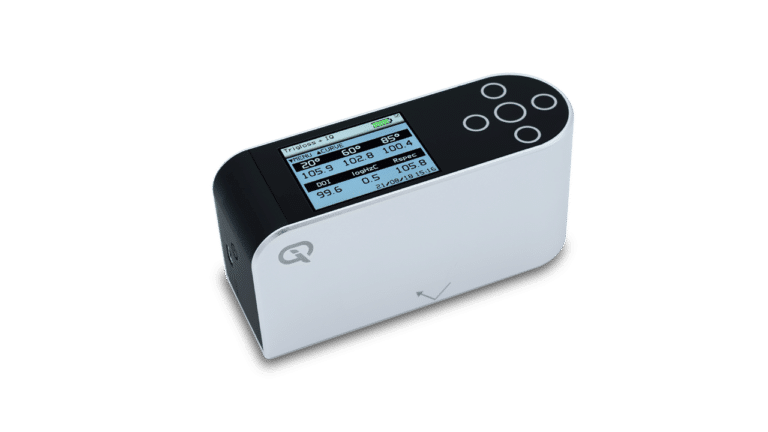
Concrete Clarity Meter (CCM)
- Industry standard Concrete Clarity Meter
- Measures Gloss, Haze and DOI of polished concrete
- 20/60˚ Glossmeter for high gloss finishes
- Compatible with concrete polishing standards

Rhopoint IQ 20/60 Gloss Haze DOI Meter
- 20/60 gloss meter for matt to mirror finishes
- Haze and DOI measurement to ASTM E430
- To ensure accurate and reliable results, the Rhopoint IQ 20/60 Gloss Haze DOI Meter is supplied with standards calibrated and certified according to ISO 17025 UKAS
- Why should I buy an IQ and not a standard gloss meter?

Rhopoint IQ 20/60/85 Gloss Haze DOI Meter
- 20/60/85° gloss meter for matt to mirror finishes
- Haze and DOI measurement to ASTM E430
- To ensure accurate and reliable results, the Rhopoint IQ 20/60/85 Gloss Haze DOI Meter is supplied with standards calibrated and certified according to ISO 17025 UKAS
- Why should I buy an IQ and not a standard glossmeter?
